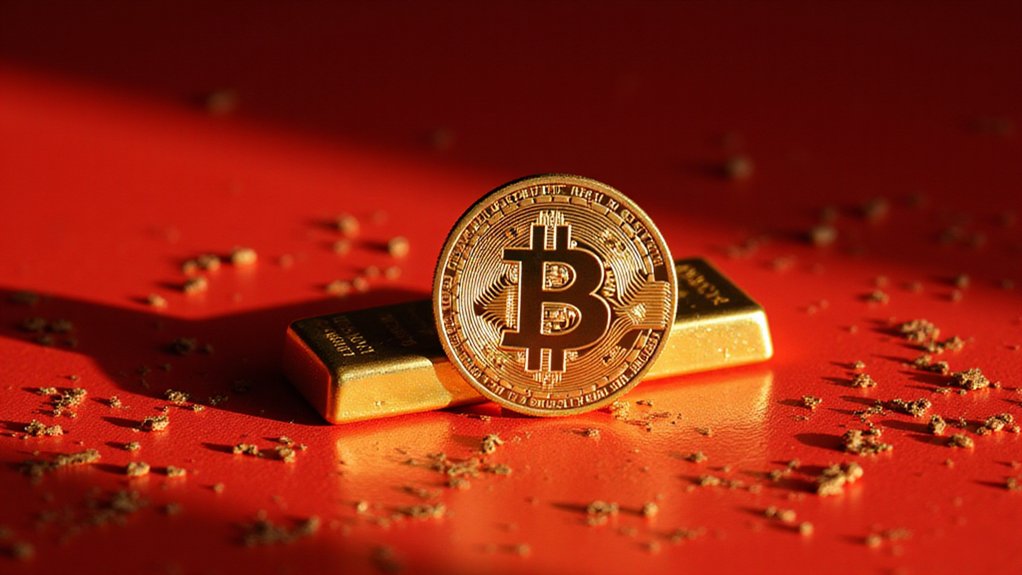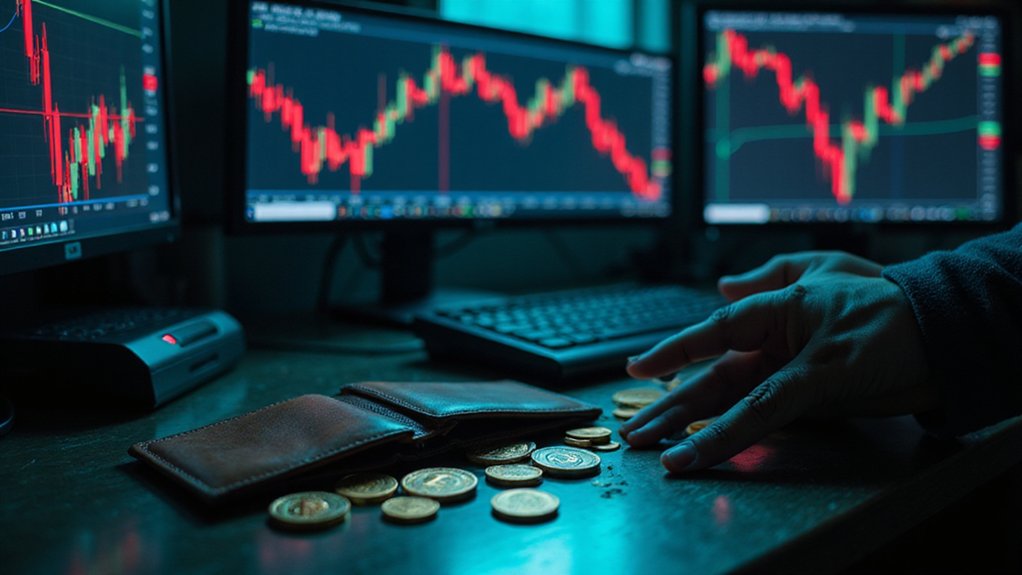When crisis hits, gold shines and Bitcoin craters. That’s the uncomfortable truth crypto evangelists hate hearing. During a recent Middle East escalation, gold climbed 0.85% while Bitcoin nosedived 2%. Altcoins? They got murdered—down 8-10%. Welcome to reality.
Gold climbs while crypto crashes—the brutal reality check every Bitcoin evangelist desperately needs to hear.
The numbers tell a brutal story. Over $140 billion in crypto market value vanished in a single crisis-driven trading session. Meanwhile, gold, U.S. Treasuries, and the Swiss franc saw immediate safe-haven inflows. Bitcoin’s much-hyped support zones at $105K-$106K? They crumbled like wet cardboard, triggering liquidations exceeding $1.4 billion.
So much for “digital gold.” Bitcoin’s reputation as a safe-haven asset looks increasingly ridiculous when it moves lockstep with tech stocks during global emergencies. Gold trades in a deep, liquid market with daily volumes surpassing $120 billion. It carries no credit risk. Central banks hoard it.
Bitcoin? Its market liquidity evaporates faster than morning dew when panic strikes. Research confirms Bitcoin performs like riskier assets during extreme market shocks, failing its digital gold narrative. Academic analysis concludes cryptocurrencies cannot serve as viable substitute for State currencies, particularly during financial instability.
Here’s where things get weird. While retail investors dumped crypto like toxic waste, institutions kept buying. BlackRock’s spot ETF scooped up 2,650 BTC during the volatility. These big players seem unbothered by the chaos, maintaining or even increasing their holdings.
ETF inflows suggest growing mainstream financial integration, but that doesn’t magically transform Bitcoin into a crisis refuge.
Gold’s credentials are bulletproof. Its all-time highs often coincide with crisis events. It’s been an inflation hedge for centuries.
Bitcoin? Its decade-long history lacks any significant high-inflation episodes. The crypto’s defensive qualities remain purely theoretical, built on hopium rather than hard data.
Central banks continue treating cryptocurrencies like radioactive material for their reserves. The volatility and regulatory uncertainty make Bitcoin a non-starter for serious institutional reserves. Gold sits near $2,000 an ounce, benefiting from inflation and recession fears while Bitcoin gyrates wildly.
The verdict is clear. Bitcoin might be many things—a speculative asset, a technological marvel, a libertarian dream. But a safe haven during geopolitical crisis? Not even close. When the world burns, investors still reach for the yellow metal, not the digital alternative.
References
- https://www.onesafe.io/blog/bitcoin-vs-gold-geopolitical-crises
- https://www.iei1946.it/article/837/money-or-crypto-gold-problematics-and-possible-worlds-for-cryptocurrencies
- https://economictimes.com/markets/cryptocurrency/how-can-anyone-consider-bitcoin-to-be-a-digital-version-of-gold-questions-peter-schiff/articleshow/121826305.cms
- https://www.cato.org/blog/digital-gold-fallacy-or-why-bitcoin-cant-save-us-dollar-1
- https://www.raconteur.net/finance/crypto-versus-gold-the-search-for-value-in-a-time-of-crisis









